Transparently a work of art

At this year’s Cheltenham Science Festival Mark Lythgoe and his students made the deliberately provocative suggestion that medical images have had a greater impact on the imagination than any work of an artist. The first image was something of a slam-dunk for their argument: the radiograph taken by Wilhelm Konrad Röntgen of his wife’s hand, taken three days before Christmas in 1895. In less than five years x-rays went from being a weird curiosity that shook physics to a must-have medical and photographic tool that transformed how we look at our bodies. By 1905 there were several commercial manufacturers making tubes for medical imaging and home photography.
The penetrating power of the x-rays emanating from these tubes varied and the factors affecting it seemed myriad – the size of the induction coil, the type of interruptor (the x-rays were pulsed to build up more voltage in the coil), the quality of the vacuum, the quality and age of the electrodes, and the thickness of the glass, among others. The best images were obtained with x-rays of intermediate ‘hardness’. Several scales of this hardness emerged, including Bernhard Walther’s eight-point W-scale based on the ability of the x-rays to cause fluorescence on a screen after passage through platinum foils of different thicknesses. Such semi-quantitative measurements made it possible to surmise that the glass of the x-ray tube might itself be a hindrance to producing images.
Two brothers attacked and solved the problem. Frederick and Charles Lindemann were born into a wealthy family. Their father, an immigrant from the French part of Alsace, had married a rich widow who lived in Sidmouth, UK, in a big house (‘Sidholme’) with 14 acres of garden. Charles was born there, while Frederick was born in Baden-Baden, Germany, where his mother had, with optimistic timing, travelled ‘to take the waters’. Their father dabbled in science in his spare time and had a small observatory in the grounds of the house, as well as a laboratory that both brothers would spend time playing in. Both brothers were very able scholars who resisted bullying by giving as good as they got. Frederick, particularly good at maths, was very proud of his slide rule, an aid to thought that he would keep in his pocket for the rest of his life. After time at nearby a prep school, both boys were sent to school in Darmstadt, Germany.
In 1908 they joined Walther Nernst’s research group in Berlin. It probably helped that their parents provided financial support. They lived quite grandly. Frederick in particular would leave the lab to play tennis, which he played at a very high level, later playing at Wimbledon. Nernst was utterly bemused: Why would someone so clever chase a little ball and try to win a shiny cup that he had the money to buy?
Nernst set the brothers to work on low temperature thermodynamics. Frederick measured the heat capacities of solids using the calorimeter that Nernst had just designed. The measurements deviated significantly from Albert Einstein’s model, which assumed that all the atoms vibrated harmonically at the same frequency. With Nernst, Lindemann developed a mathematical model that assumed that two frequencies. While the fit was pretty good. Peter Debye’s more complete model, published the following year, is in our textbooks today. In parallel, Charles measured coefficients of expansion across a wide temperature range, to test Eduard Grüneisen’s predictions of the relation between vibration, heat capacity and thermal expansion.
But the Lindemanns had a much wider range of interests. Nernst’s chaotic lab (it was referred to as ‘being in a state of maximum entropy’) was filled with kit and the brothers began to make measurements of the absorption of x-rays through gases. This, along with other experiments in making UV-transparent glass for spectroscopy, may have led them to making x-ray-transparent glass.
Window of opportunity
J J Thomson, discoverer of the electron, had suggested a correlation of x-ray absorption with atomic weight. So the brothers wondered whether replacing sodium, calcium and silicon with lithium, beryllium, and boron respectively would yield a more transparent glass. Mixing the oxides at high temperature in a platinum crucible, they got a viscous liquid they could pour out into clear plates. They built an x-ray tube with two windows of ‘normal’ and their new glass. On the W-scale, the new glass absorbed around 10% of the x-rays compared to 40% for regular glass. The work was published and they moved on.
By 1913 Frederick’s name was sufficiently well-known that there was talk of him as a candidate for the chair in the Clarendon lab at Oxford, a position for which Henry Moseley, who had just published his paper on x-ray spectra, was also angling. Frederick was playing tennis when war was declared in 1914; he scrambled to leave Germany to avoid being interned as an enemy alien. Both brothers served in the war, Charles becoming a senior officer and later moving to the Foreign Office.
Frederick stayed in science. Moseley’s tragic death made Frederick’s appointment at Oxford inevitable. He moved into an ancient physics building that didn’t even have electricity. A whirlwind of energy, he built up the department into an intellectual powerhouse. He would later become Churchill’s scientific advisor, a position in which he provided often controversial, but crucial, technical advice in the second world war, eventually becoming Lord Cherwell.
The impact of what should be called ‘the Lindemanns’ glass’ is just staggering. In the four years after their invention, the Braggs would invent x-ray diffraction as a discipline, while Moseley would create x-ray spectroscopy. And x-ray images are everywhere. More impactful than Leonardo and Picasso? At the risk of being called a philistine, I’d say ‘You betcha blue booties they are!’
Acknowledgment
I am grateful to Mark Lythgoe and his students for inspiration.
References
C L Lindemann and F A Lindemann, Z. Roentgenkunde, 1911, 13, 141

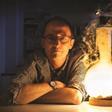
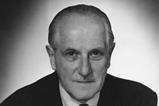

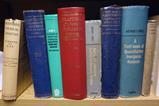
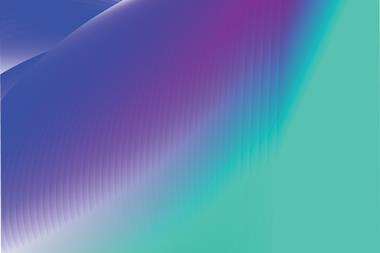
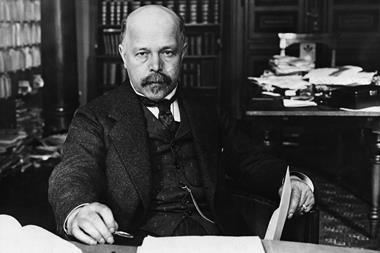
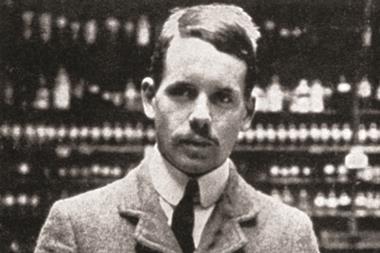









No comments yet